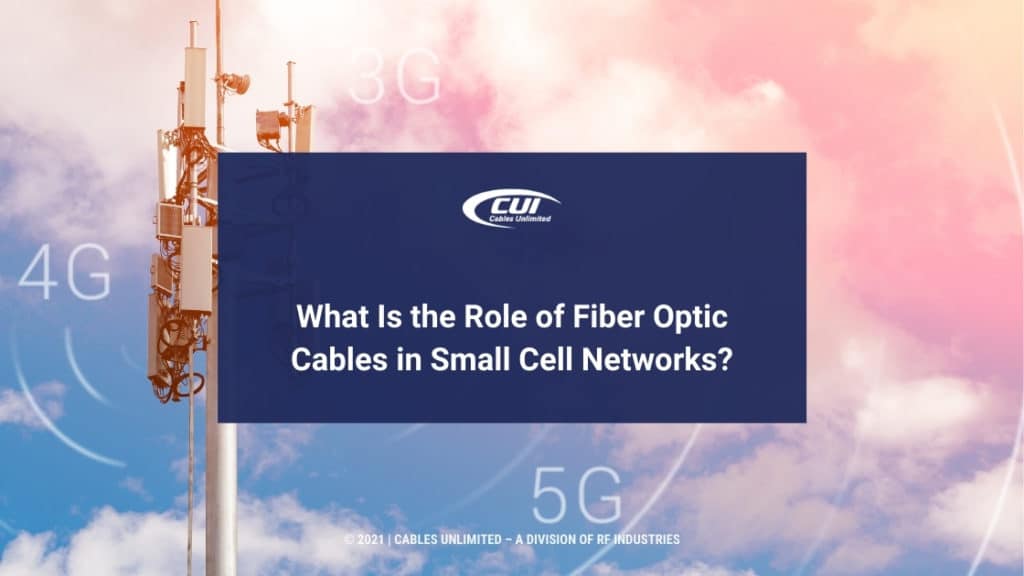The COVID-19 pandemic has caused considerable disruption in 5G implementation along with the associated implementation of small cell networks. That’s been coupled with raw material shortages, think copper and fiber, as well as manufacturing and shipping challenges. Even so, small cell networks are still expected to expand considerably over the next several years with both 5G and 4G solutions.
As a reference point, Small Cell Forum’s July 2021 Market Forecast expects 35.7 million radio units deployed by 2026. Of these, 70% are expected to be in enterprise environments with the remainder in urban environments with a small segment in rural and remote. As a further reference point, the Dell’Oro Group estimates the global small cell radio access network (RAN) market to reach $25 billion by 2024.
All those small cell installations require a wide range of cables including copper, coax, and fiber. Plus, those cables need to meet the needs of a wide range of small cell installation form factors ranging from nearly invisible on lamp posts to converting existing cell sites.
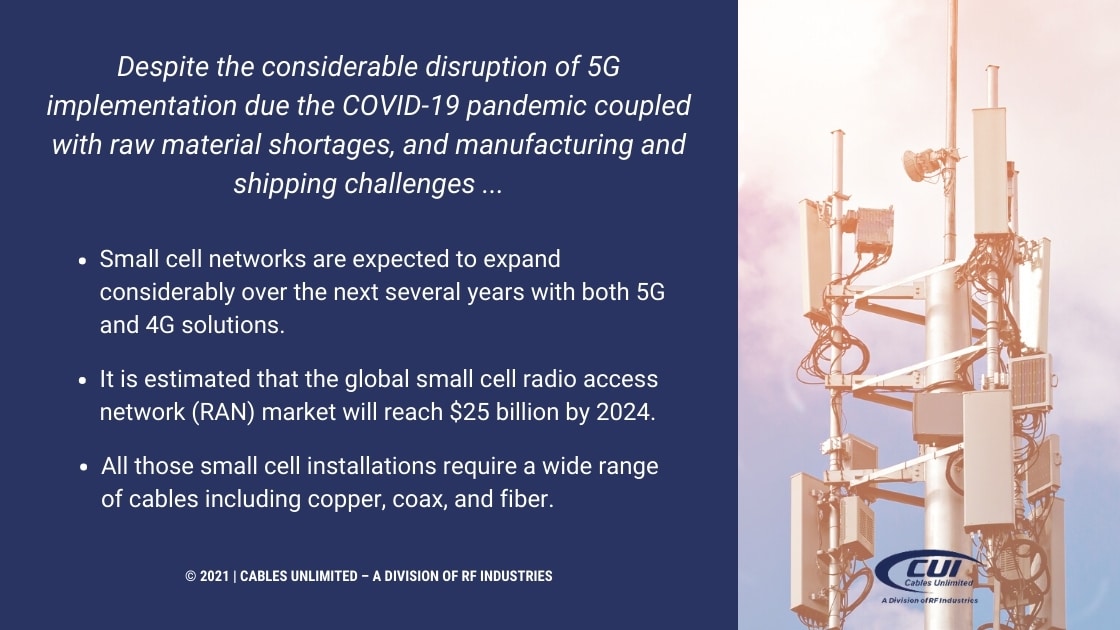
It’s All About Fiber
The goals of 5G mobile networks, along with a growing realization of the benefits of replacing cables going to businesses and homes, are a significant step up from today’s networks. They include:
- Increase of up to 1000 times current bandwidth.
- Increase of 100 times more connected devices.
- Network availability of 99.9% along with 100% coverage.
- Connection rates up to 10 Gbps.
- Latency of 1 ms end-to-end.
- Nearly 90% reduction in energy usage.
While small cell networks can and are currently using copper as well as microwave and millimeter wave RF links back to the network, those transmission methods can’t meet the rigorous requirements noted above. That requires fiber and lots of it. Fiber also provides security, much higher speeds, and is far more cost effective.
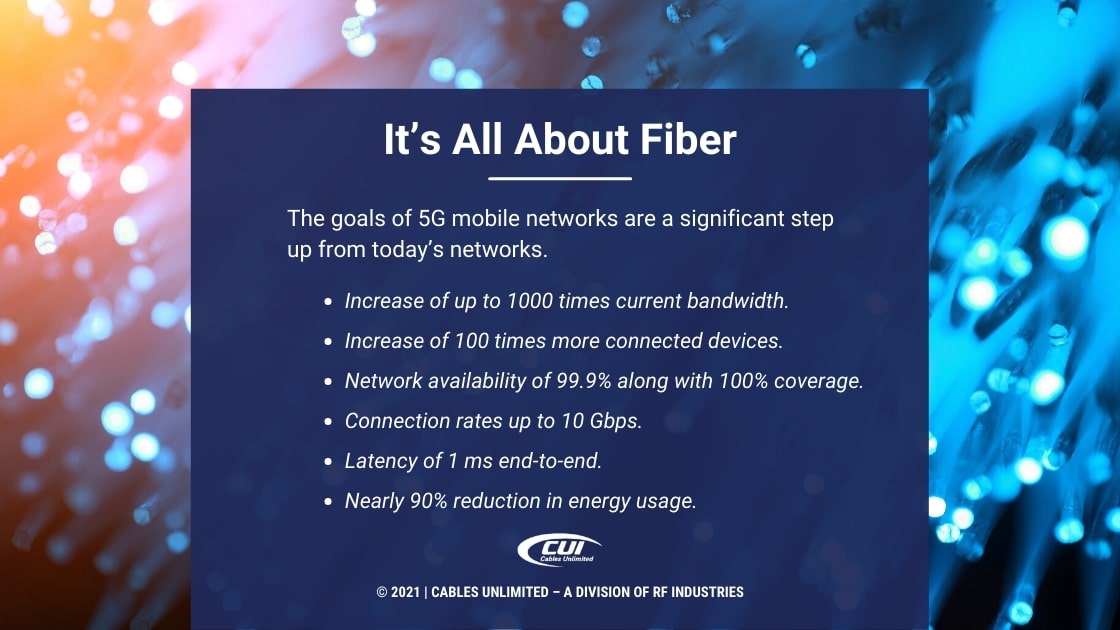
Expanding Demand for Fiber Cable
The demands of 5G require moving from macro cell towers, positioned about 25 miles apart and covering roughly 10 square miles, to small cells with 60 small cells covering one square mile. That means far more masts are needed along with the associated cabling.
There are also distributed antenna systems (DAS) that use fiber optic cables to distribute traffic from one antenna to several substations. This is often used within buildings as well as in urban areas where it distributes the traffic across a wide range of locations from street lamps to traffic signs and more.
Cable Solutions for Small Cell Networks
The types of installation described above have spawned the development of a cable that combines optical fibers with power cables. One option is our OptiFlex™ hybrid composite cable assemblies with multiple fiber cables along with a copper cable for power connections.
That’s just the tip of the iceberg of cable options used in small cell networks. They range from single-strand fiber to as many as 24 strand. Then there’s the plethora of connector types starting with Duplex LC, LC Uniboot, MTP®/MPO, SC, our full AXS™ compatible cable glands, IP-Series outdoor connectors, along with all the radio-specific connectors. That, of course, is followed by pigtail splice kits in all their various forms and applications. As well as coaxial cables and jumpers, network test cables and adapters, as well as a whole host of power cables.
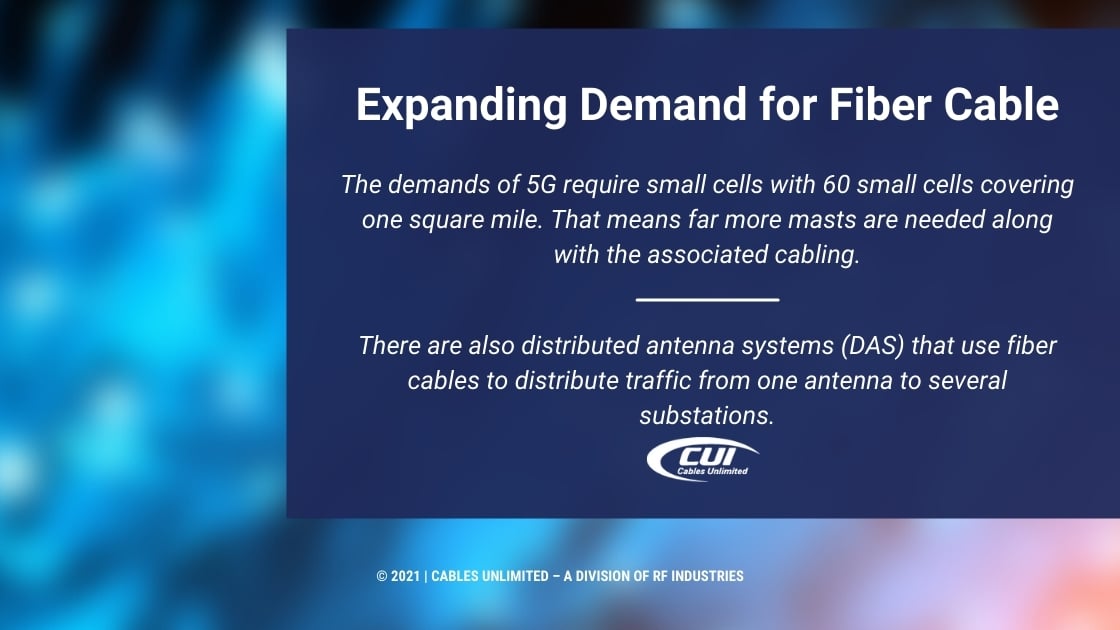
To help you specify exactly the right cables for your projects, we’ve created the Fiber Optic and Hybrid Cable Configurator. Try it out for your next project.
Closing Thoughts
We recently wrote about Meeting the Demands of 5G Global Infrastructure Expansion saying that a perfect storm is heading to the global network ecosystem. It’s quite true. A storm of not only increasing capability but vastly increasing demand for fiber and even copper—amidst a global shortage of materials.
In that environment, you need suppliers you can trust to both to provide what you need now and develop the products you’ll need in the future. Not only that, but those suppliers need the expertise and experience to improvise solutions to fit your needs in the midst of that perfect storm.
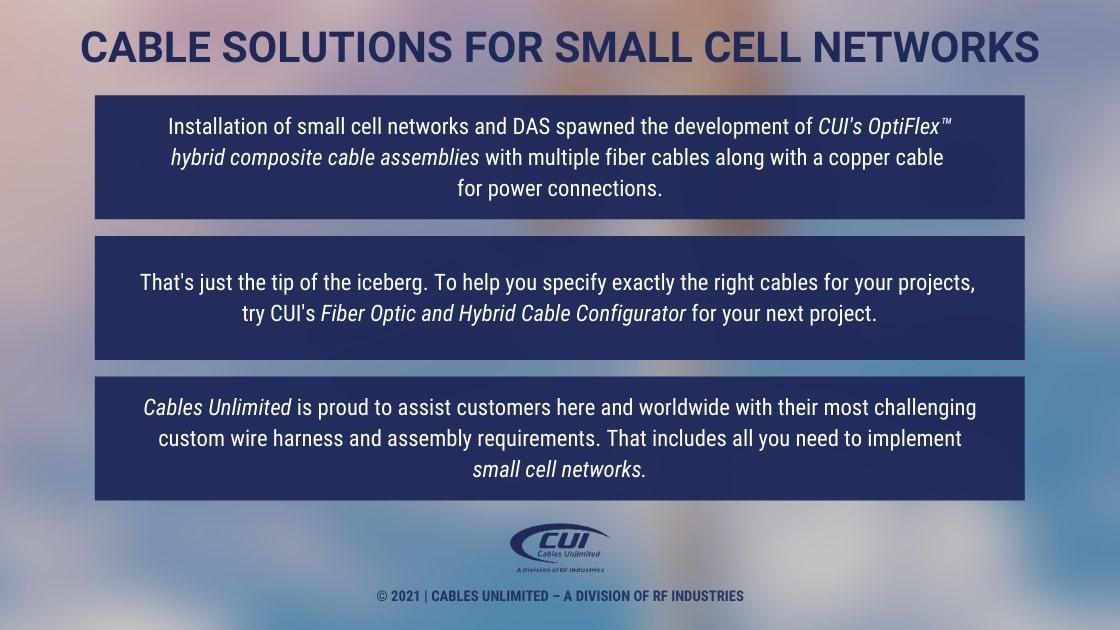
We Can Help
With production facilities on both coasts of the United States, Cables Unlimited is proud to assist customers here and worldwide with their most challenging custom wire harness and assembly requirements. That includes all you need to implement small cell networks.
Our sales representatives are standing by to assist you with product questions and quotes Monday – Friday, 8:00 am to 5:00 pm Eastern. You can also send us an email or complete our contact form and we’ll get right back to you.

